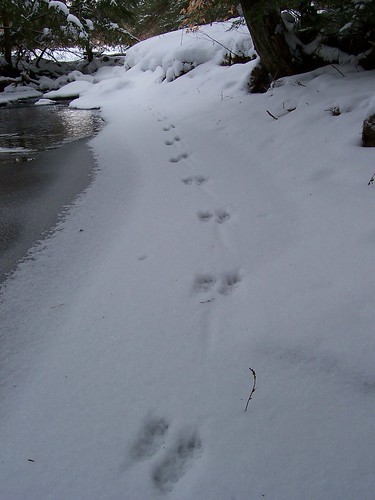Water is a magnet for children. They like to dam little creeks to create pools and whirlpools. Sticks are tossed into creeks from bridges to see how long it takes them to float underneath. Rocks are splashed and skipped through the water. Water is an attraction.
I have to confess that I spent a lot of time in a drainage ditch behind my house as a child, creating waterfalls and pools, and racing leaves down currents. One of the best features of my grandmother’s house was a bridge over a shallow gully that had a creek in it. We would throw in leaves, dandelions, and sticks on one side of the bridge and then turn around to see who had found the fastest stick. Looking back, we spent a remarkable amount of time staring at the water.
This attraction to water may be genetic, because my kids do the same thing. My son, especially, has a fondness for following creeks and throwing in rocks to splash and skip. He creates walls and protected beaches, and watches how the water is affected with remarkable attention.

In the winter, we follow frozen creeks up the hills to their source. Other animals seem to be as attracted to the water as we are. Mink tracks in the snow cross and re-cross the creek as the mink hunts high and low through the area. Tracks from a raccoon wander to the water’s edge, wade in for a bit, then wander away from the creek as the raccoon moves on its own nighttime missions. Insects crawl slowly away from the creeks on top of the snow. Winter Craneflies, Winter Stoneflies, and other creepy crawly insects are often noticed only by children, naturalists, and fisherman who imitate the insects as they tie flies.
Water is something I have had to come to terms with on walks. A walk along a creek or a pond goes slower than a walk in the forest. More time is spent slowing down, playing, and paying attention to the things of the water than in the forest. Water creates a need to slow down, to play, to build, and experiment. Children use this play to understand how the creek works, what lives there, and how rocks balance.

I use that time for reflection. What I really want to do is move on, see new areas, hike a large loop. This creates a huge dissonance between parental desires and children’s natural need to play along the water. Balance is hard to find between adults wanting to move and children wanting to slow down and explore. It can result in frustration, anxiety, and anger.
I often hear the results of this on Audubon’s trails. Children cry because they want more time to explore or play in a spot. Adults yell or argue that it’s time to move on because there is more to see and they want to get to a certain tower or finish a certain trail. Nature walks can easily fall into a state of frustration for all involved when everyone is going for a different reason.
My family often goes out to the same spots several times a year and, sometimes, several times a month. Trails aren’t just trails, they are filled with destinations. There are logs that are balanced on time and again. There are rocky beaches along creeks that are played on over and over. There are hills and stumps to climb, mini-creeks to jump, and bridges that are destinations.
Audubon is the same way. There are ponds everywhere and, at this time of year, it is not unusual to see sticks and rocks on the ice that children have thrown. Water attracts children everywhere. It is a delight to watch the excitement on kids’ faces as they cross a long boardwalk or climb a tower to look out over a pond.
Take some time to get outside this winter, even on a short walk, and appreciate how the season has remade the world into something different than you remember from before. Even better, take a child with you to help you see things with new eyes.
Audubon Community Nature Center builds and nurtures connections between people and nature. ACNC is located just east of Route 62 between Warren and Jamestown. The trails are open from dawn to dusk as is Liberty, the Bald Eagle. The Nature Center is open from 10 a.m. until 4:30 p.m. daily except Sunday when it opens at 1 p.m. More information can be found online at auduboncnc.org or by calling (716) 569-2345.


Recent Comments